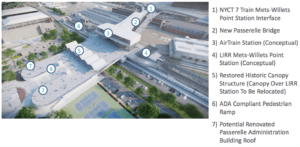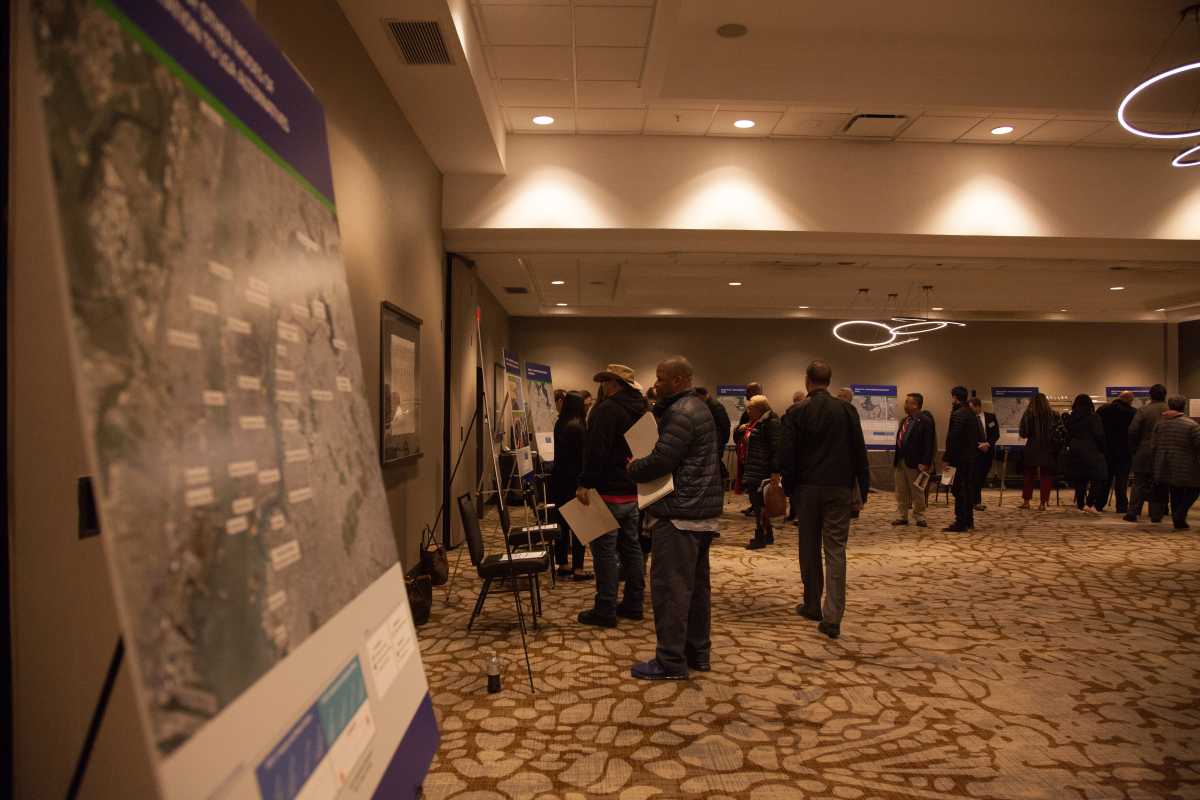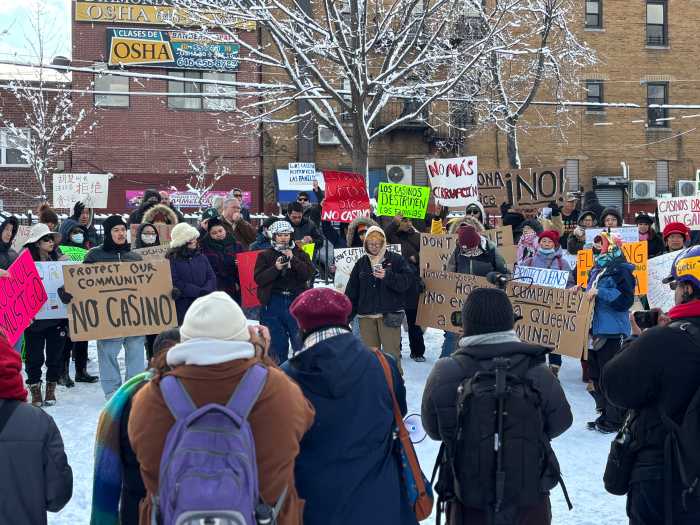In the midst of a week of increased criticism over the LaGuardia AirTrain project — including an excoriating rally at the steps of City Hall and an unheralded alliance between Rep. Alexandria Ocasio-Cortez and the New York Post editorial board against it — the beleaguered Federal Aviation Authority held two AirTrain public info sessions on Jan. 14 and 15.
At the pre-scheduled meetings held at the LaGuardia Marriott in East Elmhurst, the agency aimed to explain where the project is in regard to its protracted environmental review process.
The information the FAA presented was mostly a re-hashing of the report initially published in November, which ruled out 46 of the 47 alternative plans to the AirTrain project, leaving the tram from the 7 Train/LIRR Mets-Willets Point Station to the airport as the sole alternative to no action.
The meeting functioned as an opportunity for members of the community to ask FAA representatives questions face-to-face about the methodology the agency used to deem the alternatives as impractical. Poster board displays of all of the alternatives lined the hotel conference room where it was held. Somewhere around 100 attendees filtered in and out over the first hour.
The most popular station focused on potential subway extension alternatives. Many residents at the station, who were largely from the East Elmhurst area, pointed out that an extension of the N or W Line from Astoria Ditmars Boulevard to the airport would provide a single ticket ride to LGA from Manhattan, while providing a great benefit to the local community at the same time. It’s also one of the alternatives that Ocasio-Cortez said she wanted more information about in her letter.
“The options to the west make much more sense, and if you have to tunnel through the runway, you tunnel through the runway,” said Queens resident and former MTA employee Steve Strauss.
Strauss said that the presentation showed the FAA identified many logical options, especially in the subway extensions, they just hadn’t chosen to proceed with them.
“Unfortunately we didn’t start the process the right way, which is to say, ‘We want to have rail access to the airport, how do we make that happen?’ In fairness to them, we’ve made it very hard to build major infrastructure projects,” Strauss said.
Andrew Brooks, FAA’s the regional environmental program manager, pointed out that when you run into infrastructure challenges like creating new tunnels or elevated tracks, it escalates the price tag, which was another black mark against potential alternatives.
“The screening criteria are all intertwined, so it would drive out the cost. Even if there was a potential to overcome the infrastructure obstacles, it would drive the cost, and cost is another factor,” said Brooks.
A common complaint that residents had against the Flushing Promenade AirTrain idea is that it would add stress to the 7 Line. In the scoping meetings, a total of 185 residents complained about the 7 train’s problems with capacity, overcrowding and deteriorating infrastructure.
In response to that Brooks emphasized how the Port Authority’s stated goal with the project is to target the LIRR, not the 7. He pointed to a rendering of the landing at AirTrain station that placed the LIRR about 800 to 1,000 feet closer to the airport to entice riders to the railroad.

He also added by the MTA’s criteria that the 7 Train is a comparably reliable line.
“That being said, we do hear the community’s concerns about the 7 line and we’re definitely looking into this,” Brooks said.
The next step of the process will see the FAA conducting its environmental impact survey of the Flushing promenade plan. It will host a public hearing and workshops on this survey over the summer at a date to be determined.




































